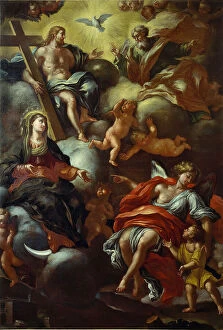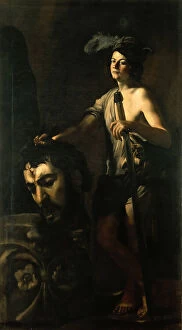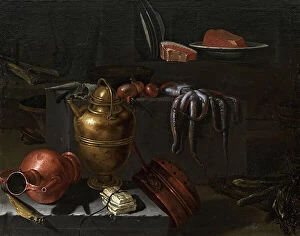Neapolitan School Collection
The Neapolitan School, known for its rich artistic heritage, encompasses a diverse range of styles and subjects
For sale as Licensed Images
Choose your image, Select your licence and Download the media
The Neapolitan School, known for its rich artistic heritage, encompasses a diverse range of styles and subjects. From religious themes to portraiture and still life, the works produced by this school captivate viewers with their depth and beauty. One such masterpiece is "Dead Christ, " an oil on canvas painting that evokes profound emotions through its portrayal of Jesus' lifeless body. The artist skillfully captures the sorrow and grief surrounding this pivotal moment in Christian history. In contrast, Luca Giordano's "Allegory of the Fortress" transports us to a realm of imagination. This vibrant oil on canvas piece showcases Giordano's mastery in depicting allegorical scenes, as he weaves together symbols and figures to convey deeper meanings. Filippo Palizzi's self-portrait offers a glimpse into the artist's soul. Painted with meticulous detail, this oil on canvas work reveals Palizzi's introspective nature and his dedication to capturing human emotion through art. Moving from personal narratives to historical events, "Story of Virginia" presents a gripping tale rendered in oils on canvas. This captivating artwork immerses viewers in an ancient world filled with passion and tragedy. "The Body of Mary of Egypt Found by Angels" is another poignant depiction from the Neapolitan School. Through delicate brushstrokes on canvas, it portrays a divine encounter that transcends earthly boundaries while inviting contemplation about spirituality. Michele Cammarano takes us beyond Italy's borders with his painting "Eritrea. " This 1893 masterpiece showcases Cammarano's ability to capture exotic landscapes while highlighting cultural diversity within his oeuvre. "The Two Mothers, " an oil-on-canvas composition brimming with maternal love, celebrates the universal bond between mothers and children across time periods and cultures. It serves as a reminder that some emotions are timeless and transcend societal differences. A departure from traditional mediums can be found in "Still Life With Jug and Landscape, " a captivating watercolor piece.








